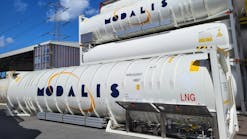The Environmental Protection Agency (EPA) is proposing its strategy for increasing the supply of renewable fuels, poised to reach 36 billion gallons by 2022, as mandated by the Energy Independence and Security Act of 2007 (EISA).
Increasing renewable fuels will reduce dependence of foreign oil by more than 297 million barrels a year and reduce greenhouse gas emissions by an average of 160 million tons a year when fully phased in by 2022, according to EPA.
The EISA calls for four categories of renewable fuels, including cellulosic biofuels, biomass-based diesel, advanced biofuels, and total renewable fuel. In 2022, the proposal would require 16 billion gallons of cellulosic biofuels, 15 billion gallons annually of conventional biofuels, four billion gallons of advanced biofuels, and one billion gallons of biomass-based diesel.
To achieve the volume requirements, each year EPA calculates a percentage-based standard that refiners, importers, and blenders of gasoline and diesel must ensure is used in transportation fuel. For the first time, some renewable fuels must achieve greenhouse gas emission reductions compared to the gasoline and diesel fuels they displace. Refiners must meet the requirements to receive credit toward meeting the new standards.
The thresholds for new categories would be 20% less greenhouse gas emissions for renewable fuels produced from new facilities, 50% less for biomass-based diesel and advanced biofuels, and 60% less for cellulosic biofuels.
EPA also will conduct peer-reviews on the lifecycle analysis of the four renewable fuel categories. Lifecycle refers to the greenhouse gas emissions over the life of the fuels.








